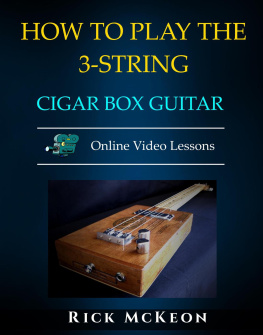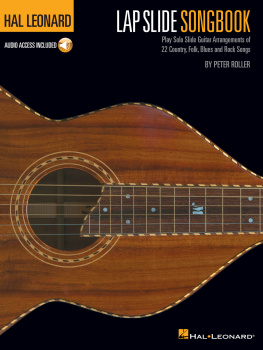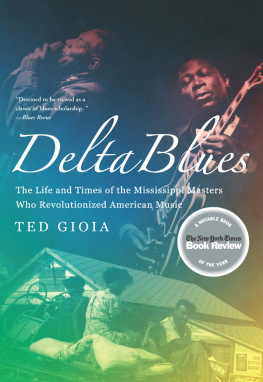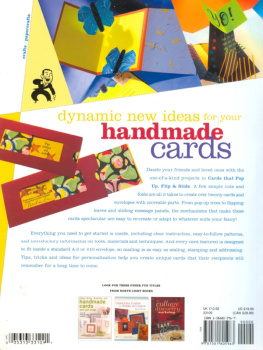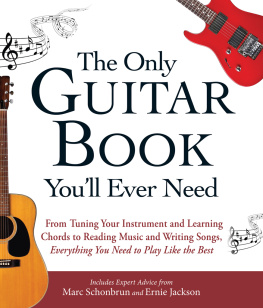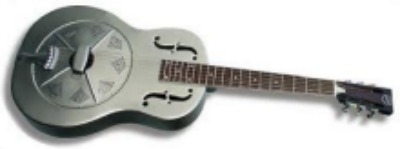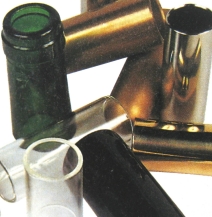INTRODUCTION
I picked up my first bottleneck over thirty years ago. I remember being amazed at the strange and wonderful sounds of Robert Johnson. I didn't have a clue how to work with that tube on my finger or how to deal with the cocophany of noises that came off the strings as I struggled to create my first bit of blues slide. Through all my trials there was something about that sound that stuck with me and years later has become my effect of choice - cheap, no wires, just the best.
My personal journey started with Robert Johnson and the Delta blues players and moved on through Ry Cooder, Bob Brozman, Martin Simpson, David Lindley, Sonny Landreth and many more - all making me more determined to learn this craft. I discovered that although the slide guitar was initially rooted in the blues of the Delta there has developed a huge range of styles and tunings which conjure up more than just the blues. Every new technique or tuning made me reach out and want to play with this wonderful add on. Over the years I've listened, experimented and adapted and will never tire of what Son House called 'The zing'
'This boy, Willie Wilson, had a thing on his finger like a small medicine bottle, and he was zinging it, you know. I said, "Jesus! Wonder what's that he's playing?" I knew that guitars hadn't usually been sounding like that. So I eases up close enough to look and I see what he has on his finger. "Sounds good!" I said. and from there I got the idea and said" I believe I want to play one of them things"SonHouse
I'm sure you'll have tried some of the basic techniques already but like me want to explore further into the the world of slide guitar. In this course I'll be sharing with you some of the tips, tunings and tricks that will take you from the Delta and beyond and will hopefully, inspire you to journey further. All the exercises and instrumentals presented in this book are supported by Video links.
So, if you're ready put that thing on your finger and let's Zing!
Video Preview 1 Video Preview 2 Video Preview 3
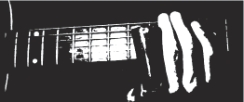
SLIDE GUTAR HISTORY
There have been many claims to the origin of the slide guitar. Its haunting sound can be heard across the whole spectrum of musical styles, through blues, rock, country, Hawaiian and even jazz. A sound so haunting, that as fans of Robert Johnson might believe, it was born from the devil himself! However, there are a few more 'earthly signposts' that musicologists have followed to try and pin down the birth of the slidesound.
Throughout the world musicians have created sounds by dragging objects across stringed instruments, for either effect or as an integral part of its sound. An example of this was discovered in W.Africa in the form of a musical bow. Still used today, this one stringed instrument was attached to a gourd resonator and held to the abdomen, while the player plucked the string and used a bone or metal to vary the pitch. Investigators into the popular form of slide playing associated with the blues, determined that this was probably why a more contemporary version of the bow called the diddly bow came to be used by the Negro musicians around the southern states of America at the turn of the century. With the influx of slaves, years before, came a rich culture of music and although the slaves were bereft of possessions a musical bow would be a simple instrument to make. The Jitterbug, like the bow, had one string but this time simply it attached to the floor or side of a shack. When plucked, an object would be dragged along the string to accompany simple songs. The sound, which could wail and moan like the human voice, became an ideal backing to the early blues and perhaps forerunner to the guitar's role in the slide style.
In the early part of the 20th century the guitar was becoming increasingly popular as a cheaper alternative to the piano. Along with the banjo, it was more portable and could be ordered by catalogue in the many rural backwaters. It is a safe bet to say, that knives, bones and glass would have been used on the guitar as an extension to the Jitterbug. The guitar became more widely used with the slide after a young Hawaiian guitarist called Joseph Kekeku made a recording using this style. It was a flashy, eerie kind of tune that became popular in the U.S., and gave the already established Black style more impetus.
The Hawaiian influence on slide playing cannot be over looked. The speed at which the music spread into the American culture at the turn of the century was evident in the increased production of guitars and lap steels. All the main makers were turning them out; National, Rickenbacker and Gibson. In fact, the Hawaiian style lap steel, far out sold Spanish style guitars. Since the early Kekeku recordings the use of the slide began to seep into all styles of music, from the early blues, right into the mountain Hillbilly music of early folk and country.
The Hawaiians have always laid claim to the invention of the slide guitar, but it is fairer to say that it was a development rather than an invention. Anyway, the young J.K could easily have got the idea by listening to an American sailor whose ship had docked in Honolulu!
Whatever the worldly origins of the slide guitar, this form of playing is best known for it's partnership with the blues. The slide playing of Charlie Patton, Son House, Robert Johnson, Bukka White and Blind Willie Johnson to name a few has reached almost classical status. It is a style that has captivated, amazed and baffled guitarists of all kinds, and to my mind has become the most enchanting.
Rick Payne
3. GUITARS
Acoustic, electric, lap steel. National, Dobro.....again your choice!
Check out the video
SLIDE GUITAR TIPS
I don't want to spend loads of time writing out exercises for slide as I'm assuming you're not beginners and have already mastered the basics. Slide playing becomes so personal that it is inevitable that we all develop our own sound and work out exercises and riffs to help our learning.
There are no real hard and fast rules, but in this section I thought it would be fun to put down some points to remember and video tips to help you generally. So, here goes:
1. THE SLIDE
This is a big subject. There are many kinds you can use. Traditional bottlenecks,
brass, copper, chrome, steel tubes, bones, stone slides, lighters, pencils, paper cups
and the list goes on....
2. WHICH FINGER?
This is your choice. They've all been used before, including the thumb. I prefer using the pinky as it gives me the choice of fretting chords behind the slide. Once again, there are no hard and fast rules just put on that thing and see what happens!
Check out the video
4. SOUND
Ok, you're using the guitar of your choice. If you hate those extraneous noises buzzing around the slide, remove them by dragging a finger on the string you're playing behind the slide. But, if you want to sound like Blind Willie Johnson, then forget all the rules!










